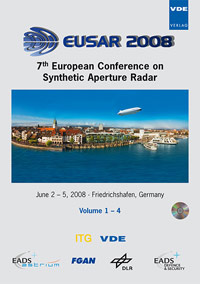Detection of the Along-Track Speed of Moving Targets in SAR Imagery based on the Radon Transform
Konferenz: EUSAR 2008 - 7th European Conference on Synthetic Aperture Radar
02.06.2008 - 05.06.2008 in Friedrichshafen, Germany
Tagungsband: EUSAR 2008
Seiten: 4Sprache: EnglischTyp: PDF
Persönliche VDE-Mitglieder erhalten auf diesen Artikel 10% Rabatt
Autoren:
Muñoz-Ferreras, José María; Pérez-Martínez, Félix (Departamento de Señales, Sistemas y Radiocomunicaciones, Universidad Politécnica de Madrid, Spain)
Datcu, Mihai (Institut für Methodik der Fernerkundung, Deutsches Zentrum für Luft- und Raumfahrt, Germany)
Inhalt:
Moving targets in SAR imagery appear blurred and shifted in azimuth. The detection of the cross-track motion of moving targets is usually based on its characteristic shifted echo in Doppler. Along-Track Interferometry (ATI) and Space Time Adaptive Processing (STAP) techniques are also used for this task. Unlike the cross-track motion, the detection of the along-track motion of moving targets is more problematic. In the Doppler-slow time map, the echo of such a target superposes on the Doppler bandwidth of the clutter. However, the slope of the Doppler chirp for a moving target with along-track speed is different from the one for a static target. In this paper, the detection of this along-track motion is based on the use of the Radon transform on the Doppler-slow time map. The explanation for the obtainment of the Doppler-slow time map and the limitations of the technique are also addressed.


